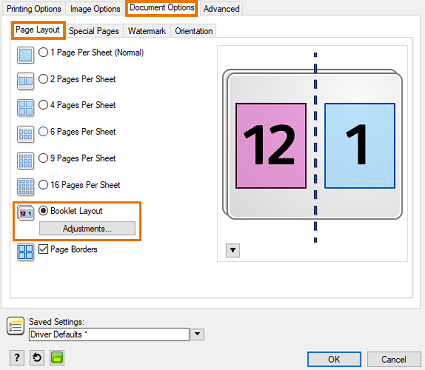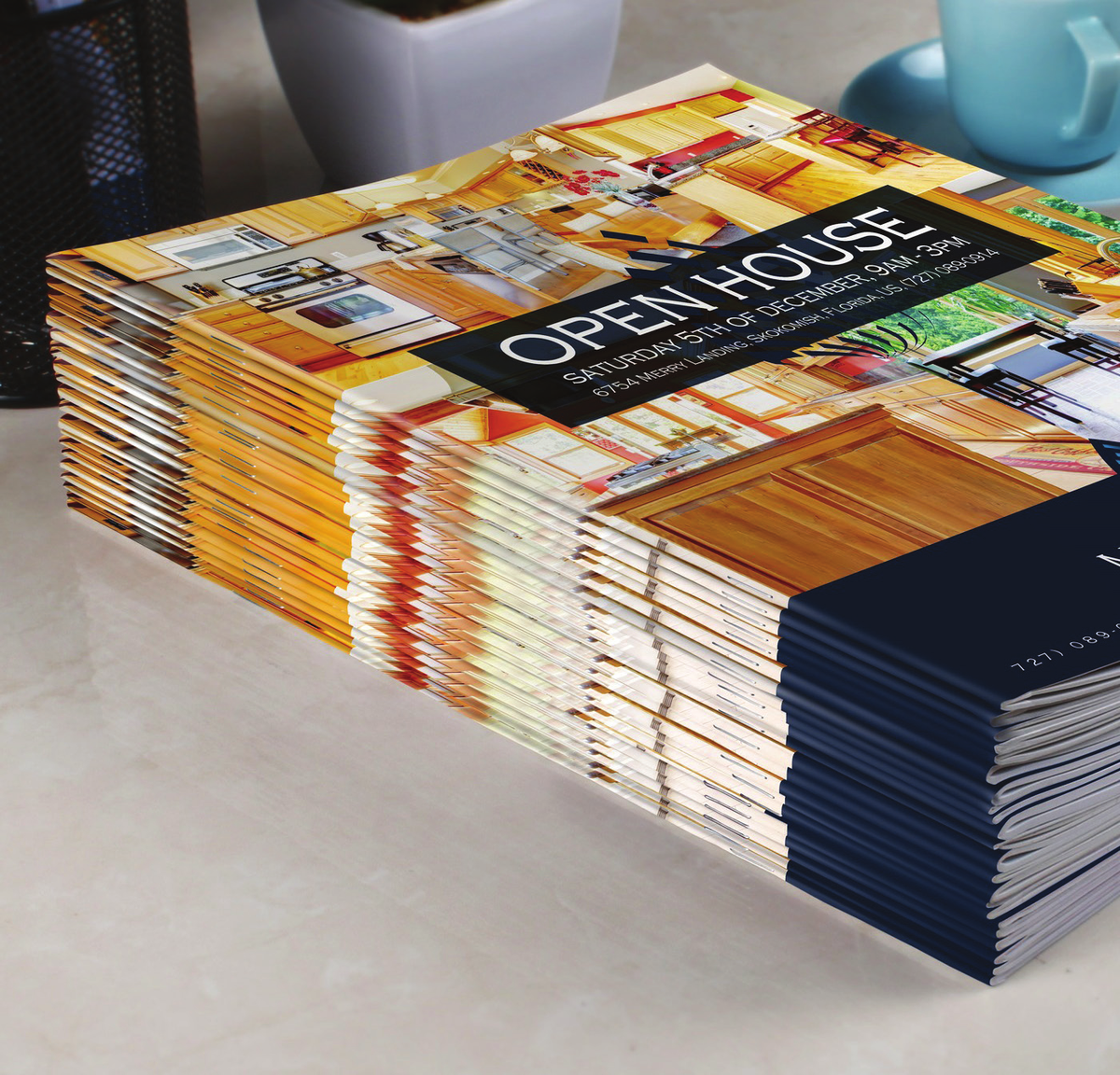The Pros and Cons of Digital vs. Offset Booklet Printing
The Pros and Cons of Digital vs. Offset Booklet Printing
Blog Article
The Essential Overview to Comprehending Booklet Printing Options and Techniques
The process of pamphlet printing involves several considerations that can considerably affect the end product. From selecting the proper style and size to recognizing the nuances of binding approaches, each choice plays a necessary function. Additionally, aspects such as paper stock and printing methods additional influence the performance of the pamphlet. As one browses these options, it becomes imperative to grasp just how they adjoin and what that suggests for the general result.
Understanding Brochure Formats and Sizes
When taking into consideration brochure printing, comprehending the numerous formats and dimensions available is vital for attaining the wanted presentation. Pamphlets can be generated in countless layouts, consisting of saddle-stitched, spiral-bound, and perfect-bound, each offering unique benefits. Common dimensions vary from common letter (8.5 x 11 inches) to smaller choices like A5 (5.8 x 8.3 inches), enabling adaptability based on web content and target audience.Selecting the appropriate dimension can influence both the format and viewers involvement. Larger sizes may fit aesthetically driven material, while smaller layouts might be much more straightforward and mobile. Additionally, the number of web pages impacts the choice of binding method, as thicker pamphlets may require stronger bindings. Ultimately, comprehending these elements allows for a much more customized approach, guaranteeing that the end product aligns with the desired message and visual, improving the general efficiency of the communication.
Choosing the Right Paper Supply

Binding Approaches: Options and Factors To Consider
When it involves binding methods for brochures, a number of alternatives are offered, each with distinct advantages. Saddle stitch binding provides a cost-efficient solution for thinner booklets, while best binding techniques supply an even more sleek search for thicker magazines. Wire-O binding stands out for its sturdiness and simplicity of usage, making it excellent for documents that require versatility.
Saddle Stitch Binding
Saddle stitch binding uses a sensible and cost-efficient option for constructing pamphlets, making it a preferred selection amongst businesses and authors. This binding approach entails folding sheets of paper in fifty percent and stapling them along the fold line, producing a well organized and cool appearance. Usually appropriate for brochures with a lower page matter, saddle sewing is suitable for publications, sales brochures, and educational products. The simplicity of this technique permits quick production and is often preferred for brief runs or promotional items. It is necessary to note that saddle stitch binding might not be appropriate for thicker booklets, as the back may not hold up under increased weight. Overall, it continues to be a trusted choice for several printing jobs.
Perfect Binding Techniques
Perfect binding is a commonly utilized strategy that supplies a professional and sleek surface to magazines and booklets. This approach includes gluing the web pages together at the back using a solid adhesive, permitting for a clean side and the ability to hold a bigger variety of pages compared to saddle stitching. Perfect binding is specifically appropriate for thicker pamphlets, such as brochures and yearly reports, where a sturdy, flat spinal column is wanted. Furthermore, it supplies the choice for a printed cover that can be developed to boost aesthetic appeal. Nevertheless, factors to consider such as web page matter, paper weight, and the intended use the brochure need to be considered, as they can affect toughness and overall quality.
Wire-O Binding Options
Wire-O binding, understood for its toughness and adaptability, provides an exceptional alternative for pamphlets that call for very easy web page turning and an expert appearance. This binding method utilizes a series of metal loopholes that hold pages securely, allowing them to exist level when open. It is specifically appropriate for presentations, brochures, and handbooks because of its robust nature. Wire-O binding is offered in different colors and diameters, accommodating various web page matters and thicknesses. Additionally, it allows the addition of covers and tabs, improving the booklet's total aesthetic. Factors to consider for Wire-O binding consist of the option of wire shade, the dimension of the loops, and the extent of modification preferred, all of which can profoundly affect the last product's appearance and functionality.
Digital vs. Offset Printing: Which Is Best for You?
When picking a printing technique for booklets, recognizing the differences between electronic and counter printing is vital. Digital printing utilizes modern-day technology to generate top quality prints quickly and cost effectively, making it optimal for short runs or jobs requiring fast turnaround times. It allows for modification, offering the capacity to print on-demand with very little waste.In contrast, balance out printing is a traditional technique that succeeds in creating huge quantities with regular high quality. It entails transferring ink from a plate to a rubber covering, then to the paper, which causes dynamic shades and precise details. Nonetheless, offset printing normally calls for longer configuration times and is more affordable for larger volumes.Ultimately, the option in between electronic and offset printing depends upon important site task requirements, budget plan, and desired amount. For tiny, time-sensitive tasks, electronic might be the very best choice, while offset may be more effective for bigger, high-grade manufacturings.

Designing Your Booklet: Tips and Best Practices
When designing a booklet, careful focus to format, font style choice, and color use can considerably enhance its effectiveness. A well-structured format overviews the reader's eye, while appropriate font styles ensure readability and convey the desired tone. Additionally, reliable usage of color can evoke feelings and highlight vital information, making the general design more impactful.
Picking the Right Layout
Just how can one successfully choose the appropriate design for a booklet? Initially, it is necessary to evaluate the pamphlet's you can check here objective and target market. A clean, arranged design enhances readability and interaction. Utilizing a grid system can help in aligning aspects regularly, producing a specialist appearance. In addition, incorporating aesthetic power structure with varying sizes and positionings of images and message can guide the visitor's eye and stress essential details. It is also crucial to leave enough white room, which avoids overcrowding and permits better focus. Ultimately, checking different designs with mock-ups can give insight into exactly how the design carries out in real-world situations, making certain that the final product satisfies both practical and visual needs.
Picking Appropriate Fonts
An appropriate font can significantly enhance the overall design of a booklet, enhancing the layout and reinforcing the content's message. The option of typefaces need to take into consideration readability, especially for body message, as it assures the info is obtainable to all viewers. Sans-serif typefaces are commonly favored for electronic styles, while serif font styles can provide a conventional feel in published products. It's a good idea to restrict font options to two or 3 to keep visual coherence. Additionally, typeface dimension plays an essential function; headings must be not frustrating however distinct, while body text should be comfy for reading. When selecting typefaces, placement with the booklet's motif and target market is vital for effective interaction and aesthetic appeal.
Effective Use of Shade
Shade acts as a powerful device in booklet layout, shaping assumptions and directing viewers emotions. It can stimulate feelings of peace, exhilaration, or trust, relying on the hues chosen. Developers should think about shade concept concepts, guaranteeing that the picked palette lines up with the pamphlet's message and target audience. Utilizing cozy shades like red and orange can develop necessity, while cooler tones like eco-friendly and blue foster tranquility.Additionally, comparison plays a vital role; complementary colors can enhance readability and visual allure. Consistency in color usage across web pages further strengthens brand identity and cohesion. Ultimately, effective color implementation not only records attention but also reinforces the booklet's purpose, making it an important facet of effective design.
Finishing Touches: Coatings and Special Results
While several sites take into consideration the material and design of a brochure the most crucial elements, the ending up touches, such as layers and unique results, play a necessary function in improving its overall allure. Coatings can supply security and sturdiness, guaranteeing that the booklet withstands damage. Matte surfaces offer an innovative, non-reflective surface area, while glossy coatings can make shades appear even more appealing and dynamic. Unique impacts, like embossing or aluminum foil marking, include a responsive dimension that can produce a memorable impact. These methods can highlight specific locations, drawing focus to essential details or producing aesthetic rate of interest. Furthermore, UV finishing can give a high-shine surface that boosts the general look.Together, these ending up touches not only improve the booklet's visual yet likewise communicate professionalism and attention to detail, ultimately leaving a long-term influence on the visitor.
Price Factors To Consider for Brochure Printing
Understanding the different price considerations for pamphlet printing is crucial for organizations and organizations aiming to maximize their budget plans. Trick variables influencing costs consist of the selection of ink, paper, and binding approaches. Higher top quality products, such as premium paper or specialized inks, usually raise the total expense. Additionally, the size and web page matter of the pamphlet play a substantial duty; larger pamphlets require more resources and time to produce.Another essential factor to consider is the printing method, whether electronic or countered, as each has its very own rates structure and suitability for different quantities. Companies ought to likewise consider style expenses, which can vary based on complexity and using expert services. Ultimately, shipping and handling fees can contribute to the total, especially for big orders. By reviewing these components, companies can make educated decisions that align with their financial capacities while attaining the wanted high quality in their printed materials.
Regularly Asked Inquiries
What Are the Environmental Impacts of Booklet Printing?
The ecological influences of brochure printing include logging from paper production, carbon emissions from transport, and waste generation from thrown out products - Booklet Printing. Sustainable practices, such as making use of recycled paper and environmentally friendly inks, can minimize these results
Exactly How Can I Guarantee Color Precision in My Brochure?
To assure shade accuracy in a booklet, one need to use calibrated displays, employ specialist color profiles, carry out test prints, and pick top notch printing services that provide color matching and proofing alternatives for finest outcomes.
What Is the Common Turn-around Time for Brochure Printing?
The common turn-around time for booklet printing varies relying on the complexity and amount - Booklet Printing. Generally, it ranges from a few days to 2 weeks, influenced by variables such as printing approaches and completing requirements
Exist Minimum Order Quantities for Booklet Printing?

Can I Publish Booklets in Numerous Languages?
Printing booklets in several languages is possible. Lots of printing solutions supply alternatives for multilingual or bilingual layouts, enabling effective communication. Cautious planning guarantees that develop aspects fit different languages without jeopardizing readability or appearances. In addition, factors such as paper supply and printing strategies more affect the efficiency of the brochure. When thinking about brochure printing, comprehending the numerous layouts and dimensions offered is necessary for accomplishing the preferred presentation. When choosing a printing technique for brochures, comprehending the differences in between electronic and counter printing is essential. Additionally, the dimension and web page count of the booklet play a significant duty; bigger booklets require even more resources and time to produce.Another essential consideration is the printing strategy, whether digital or offset, as each has its own pricing structure and suitability for different amounts. The environmental effects of booklet printing include logging from paper manufacturing, carbon emissions from transport, and waste generation from disposed of materials.
Report this page